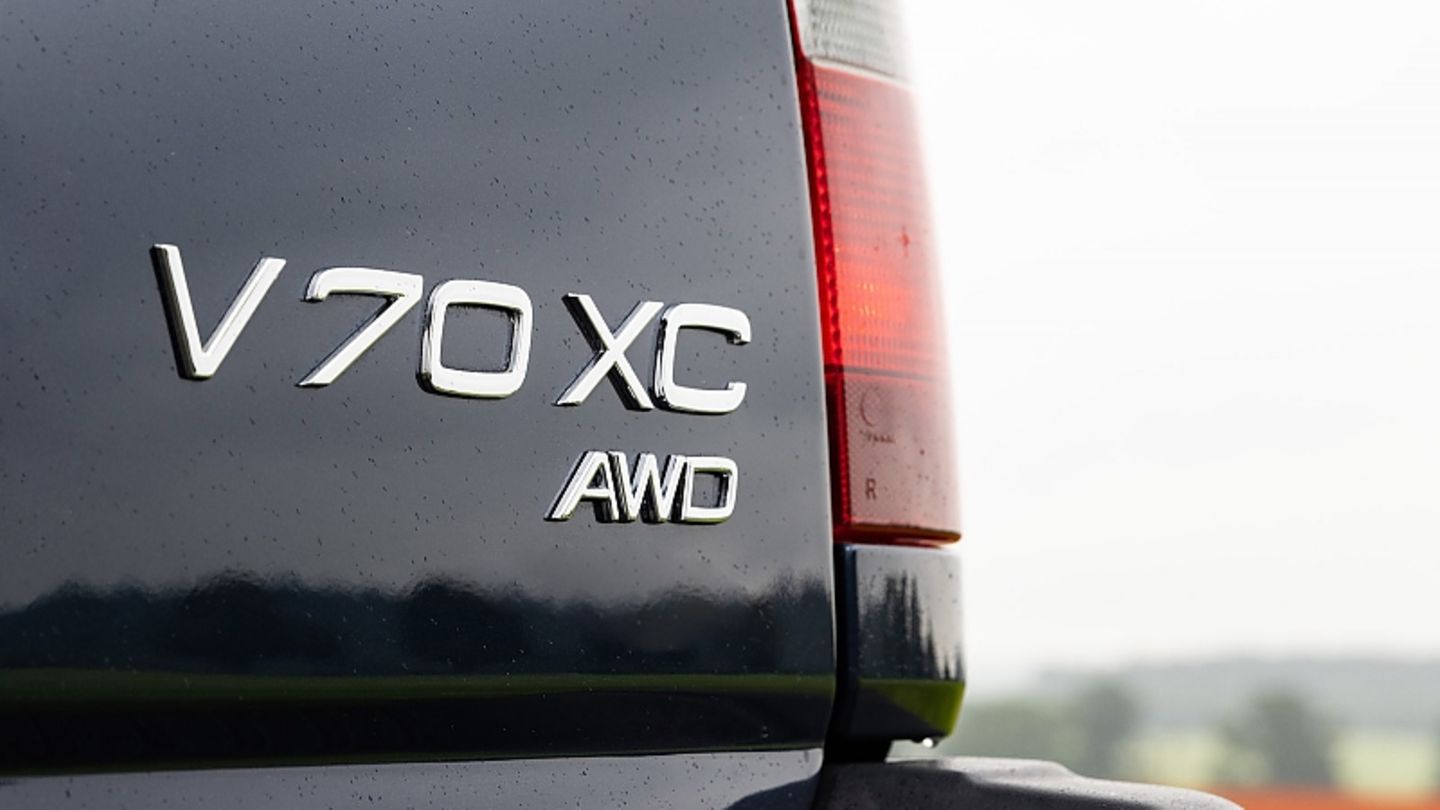When the SUV trend was still tenderly blossoming at the end of the 1990s, a parallel trend initially formed almost unnoticed in the premium segment – the cool off-road suits were born. While the standard Volvo V70 as the successor 850 presented itself as a brave station wagon at the time, the V70 XC and its successor XC70 became real trendy mobiles. A plus in ground clearance, the intelligent all-wheel drive and bumper strips attracted completely new customers.
As early as the late 1990s / early 2000s, not every customer wanted a BMW X5, Mercedes ML or Jeep Grand Cherokee SUV. Together with Audi, Volvo initiated the all-terrain station wagon trend; many manufacturers followed with vehicles of various classes. Then as now: if you opt for a lifestyle all-wheel drive, you don’t choose the route into hard terrain every day, the ride in the outback. Rather, styling and leisure activities played and still play a central role. After all, the look of the Volvo V70 XC is much more impressive than the well-behaved V70 off the shelf. At the time, the XC 70 attracted attention and stood out. In addition, he could – if you wanted – move a lot. No matter if you are a boat lover or a horse lover; Anyone who was often on the road with the beginner quickly learned to appreciate the advantages of all-wheel drive and engine power. The Swede didn’t disappoint here either. With its almost 200 hp engine, it willingly takes up to 2,000 kg on the hook. Even on unpaved ground, there is always an occurrence thanks to the permanent all-wheel drive. But the all-wheel drive of the XC also looks good on the V70 in road traffic. If the high-horsepower models of the V70 and S80 had problems getting the power to the ground, especially at the limit or on slippery surfaces, the V70 XC drove much more relaxed than its brothers and sisters with front-wheel drive.
It is true that the Cross-Country can be recognized as such at first glance due to the increased ground clearance and the indicated ram protection strips; but the main differences are hidden under the sheet metal shell. As befits its standing, the power of the 2.5-liter turbo five-cylinder is permanently transmitted to all four wheels. A viscous coupling only brings the power where it makes sense. If a wheel loses its grip, it is braked in fractions of a second and the force acts elsewhere. From today’s perspective, the chassis of the Volvo looks particularly soft and comfortable. Long distances are fun, while you have to make compromises when cornering quickly and you like to do so. In addition, the Volvo nods sharply forward when braking. The increased ground clearance of 209 mm takes its toll. In contrast to the main competitor Audi A6 Allroad, however, the ground clearance could not be varied manually.
But the brakes of the 1,700 kg station wagon are extremely powerful. The smooth power steering, on the other hand, is much more indirect than the German competition at the time. Anyone who opted for a Volvo V70 XC at the end of the 1990s was well advised to spend the more than 3,500 D-Mark surcharge for the automatic transmission. The smooth-running five-speed gearbox doesn’t really fit in with Sweden, which later costs around 40,000 euros, even during a test drive today. The engines were a stunner, because Volvo offered its V70 XC exclusively with the well-known 2.5-liter engine with five cylinders and an exhaust gas turbocharger. It initially had 193 and later 200 hp, which were then transferred to all four drive wheels. Even by today’s standards, the five-cylinder not only has a pleasant and sonorous sound, but is also extremely easy to turn. In the speed range between 1,800 and 5,000 rpm, a lively 285 Nm is available at all times. This is particularly helpful in the field or when driving with a heavy trailer.
The intelligent all-wheel drive distributes the power variably to all four wheels via a viscous coupling. If a wheel first loses its grip and then its grip, the wheel is braked and the excess force is transported to the other tires in a fraction of a second. This is to prevent unnecessary spinning, which is not always possible in real cases. The driving stability program DSTC provided additional help. If the vehicle threatens to break away, one or more wheels are also braked. The driving performance of the Volvo V70 XC does not disappoint yesterday as it does today and nobody thought in 1997 that the Swedes would regulate their vehicles once in advance obedience once at 180 km / h. The Scandinavian completes the 0-100 km / h sprint in 8.6 seconds, and the top speed is 210 km / h. Thanks to all-wheel drive and its 1.7 ton weight, the Volvo was not a food lover 20 years ago. In the practical test, it consumed around 12 liters, 1.5 liters more than the factory specification.
Inside, the 4.72 meter long V70 XC shows the usual Volvo look of its time. Comfortable leather chairs, naturally heatable, with clearly arranged buttons and control modules – that was what Volvo stood for in the late 1990s. Everything is easy to see and easy to hold – even after more than 20 years. The seats are soft and largely lacking lateral support, but it is always comfortable. At the time, there was little more than home-style cooking ex-factory, even with the top XC models. The Swedes paid for useful amenities such as automatic air conditioning, rain sensors, heated leather seats or a sunroof as dearly as their main competitor Audi, which even offered its A6 all-wheel drive with a 4.2-liter V8 engine on request. After all, in the later years of construction the V70 was also available with xenon light for an extra charge. If you missed several details, you could use one of the equipment packages (Comfort, Premium). On the other hand, the safety equipment was complete, as is typical for Volvo. In addition to the DSTC stability program, there were front and side airbags, front and rear head / shoulder airbags and a whiplash protection system as standard.
The luggage compartment made for vacation and leisure enjoyment yesterday as it is today. There are between 485 and 1,641 liters of storage space available and the loading sill is pleasantly low. The rear seat can be folded down variably and there is a useful storage compartment under the luggage floor; Particularly suitable if the riding boots have gotten wet. The payload: around 500 kg. The range of good vehicles on the used car market is manageable. In return, the prices are quite cheap. A well-equipped Volvo V70 XC / XC70 costs little more than 5,000 euros. Most of the vehicles have impressive mileage of 250,000 kilometers or more, but are often well maintained and have not passed through countless hands: a real buying tip for family fathers who want a lot of cars for little money – especially as turbo gasoline engines.
I am a 24-year-old writer and journalist who has been working in the news industry for the past two years. I write primarily about market news, so if you’re looking for insights into what’s going on in the stock market or economic indicators, you’ve come to the right place. I also dabble in writing articles on lifestyle trends and pop culture news.




